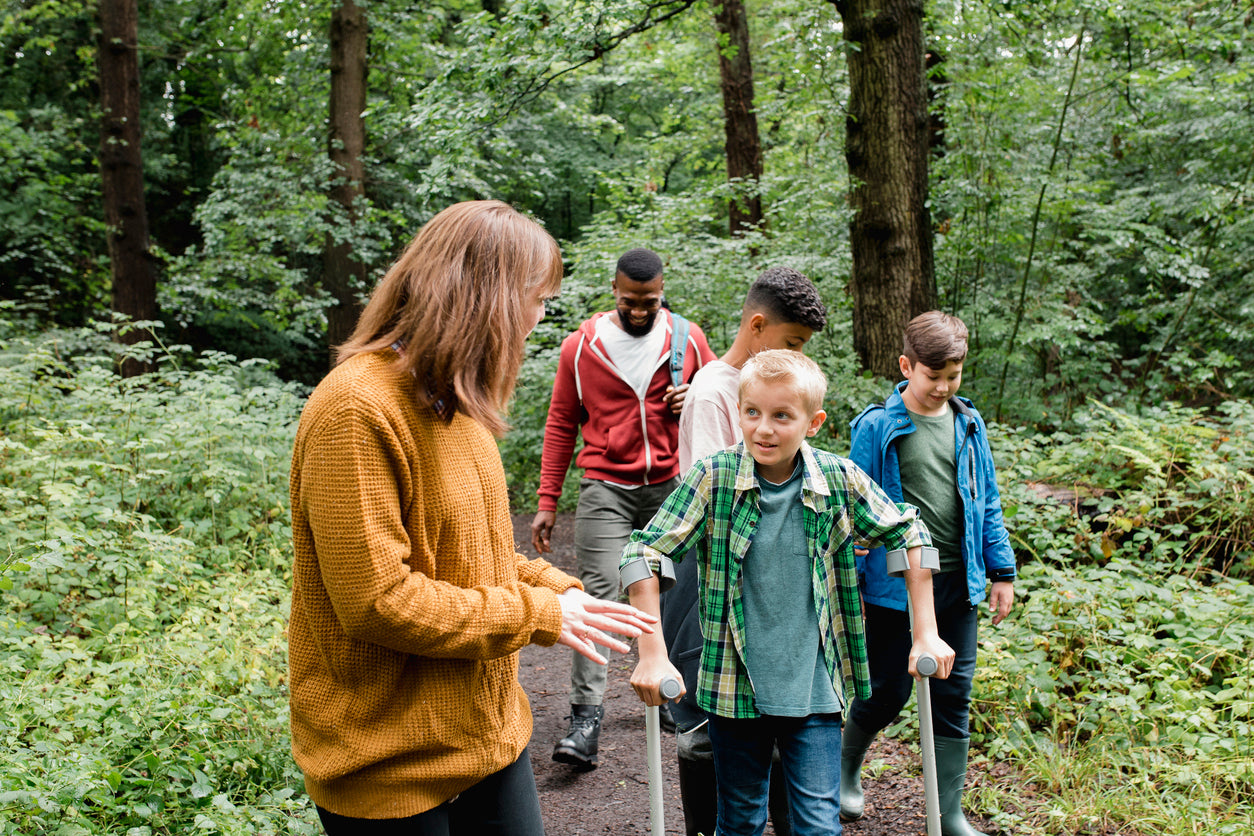Explore our collection of informative and educational blog posts to stay updated on the latest industry trends and expert advice.
30 Storytelling Tips For Educators: How To Capture Your Student's Attention

Storytelling has been around as long as humankind. It is one of the most effective ways to communicate an important truth to another person. It is a connection point between two people. It gives meaning, context, and understanding in a world that is often filled with chaos and disorder.
Because of this, educators must use stories if they hope to reach their students. Stories will stay with people much longer than facts or statistics. If a teacher becomes an excellent storyteller, he or she can ensure that any concept they teach will be remembered for years to come.
Stories don’t just work well for narratives; they can be used to illustrate scientific or mathematical processes as well. Take for example the difference between learning a formula, and the ability to solve that problem in the context of a real-life example. Stories bring information, knowledge, and truth to life.
1. Every Part Must Be Essential
When you compose your storyline, be it a fictional story to teach a lesson, or a non-fiction example, make sure that each part of the story is essential to the ending. Each character, point, or principle must somehow relate to the main point you are trying to drive home. Anything that does not affect the outcome in some way (directly or indirectly) can be hacked off the story.
Let’s take for example, a story about the planets. You may be trying to help students memorize the order of the solar system. Any tale you concoct to help illuminate the facts must be related to the planets. It is not the time to talk about black holes, supernovas, or even the size of each planet.
Keep the main thing…the main thing.
2. You Must Have a Hook In Your Opening
In writing, it is called an inciting incident. You hook the listener in by presenting a problem that encourages them to keep listening. You can use this tactic in any lesson.
Creating a world in which it is taken away reveals the ultimate importance of the process you are describing.
For example, if you are teaching the concept of photosynthesis, start your story by imagining a world in which all the flowers didn’t have leaves. You create a problem that the story (in this case photosynthesis) solves. In many cases, students don’t realize how many principles they take for granted (gravity, light, etc.).
Creating a world in which it is taken away reveals the ultimate importance of the process you are describing.
3. Draw a Theme Out of Your Story
Stories have a depth of meaning when there is a theme. However, it isn’t always easy to write a story with a theme in mind. Rather, write the story first- with all the points you want to cover. When you’ve finished, stand back from the story for a moment to see if you can draw out a theme.
This is especially important when your story relates to incidents in the past. History can be a boring subject without a lot of real-life application. Themes help connect the past with the present, and ultimately the future. Don’t be discouraged if once you find your theme, you have to rework and rewrite the story.
This is common.
4. Keep It Simple
Complicated stories aren’t necessarily better. If your audience is young, simple is obvious. However, even older audiences can be profoundly impacted when you take a complex idea and reduce it to a nugget that can be remembered.
Scientific principles like gravity and electricity can be difficult for young minds. Using analogies can help. For example, to explain an electrical circuit, describe how a train can only move along tracks that are connected to each other.
A broken track means the train must stop and electricity is the same way.
5. Maintain Eye Contact
Eye contact is one of the most important non-verbal ways to connect with other people. It not only helps keep a student’s attention, but it also conveys a sense of confidence and truthfulness.
Imagine telling a story while looking at your feet. What kind of emotions would your students feel, even if the story were light and upbeat? Always look directly into your student’s eyes. You will connect with them and keep their attention longer.
6. Use Vivid Language That Kids Can Understand
Some psychologists argue that telling stories is one of the primary ways humans learn.
Even if you are teaching science or math concepts, pick a word or two that your student’s haven’t heard of before. Describe and define the word first, and then use it throughout the story.
For example, if you are talking science, identify the word “energy” and then use it several times during your story. By the end of the story, they will have learned the concepts of the tale plus some vocabulary.
Popular television shows use this method. Dumbing down the vocabulary will minimize the power of your story. It is similar to reading a text in a translation. When someone wants to study the content more carefully, they first learn the original language it was written in to understand more fully what the writer was trying to convey.
You want to use the right words, which may mean first having to explain them so students can follow along.
7. Use Movement
Movement can be used in multiple ways. As the storyteller, you can paint pictures with your body- using your hands, feet, legs, and head. Similarly, you can ask the student’s to perform movements during certain parts of the story.
This will help activate their memory and keep their attention focused on what you are communicating.
8. Use Dramatic Pauses
People often talk more quickly than the brain can process. If you pause at crucial moments in the story, you give your students the chance to think critically about the piece of information you have just given. Don’t be afraid to pause, especially at a tense moment.
Popular television shows use dramatic pauses (or cliffhangers) to rope the audience back into the story. When it seems that the problem is unsolvable, it is the right moment to pause, giving your audience a chance to think up the solution themselves.
9. Change Your Voice With Different Characters
It helps to make characters more memorable when you give them personalities. Part of that includes changing your voice with each character. Without visual props, the voice is one of the only ways to bring the character to life.
If you can have multiple instructors acting as different characters, this is the best option. But sometimes, it isn’t possible. If you are re-enacting the Civil War, stand tall and speak deeply when you are President Abraham Lincoln. When you are speaking as an African American slave, change the volume of your voice and use an accent.
Maybe slump your shoulders over to take on a look of oppression.
10. Make Your Ending Strong With an Important Take Away Point
The ending is the last thing your students will hear. Whatever points and/or principles you think are most important, put them at the end. If it doesn’t make sense to wait until the end, simply add them AGAIN at the end- to drive the point home.
If you can make the ending one sentence, this is even better. Use alliteration, repetitive words, or a singsong cadence to help make it memorable. For example, if you want your students to remember that equality is the theme of the history lesson, come up with a phrase like, “The Civil War taught Americans that everyone is free to live, free to pursue their dreams, and free…to be free.”
It is easy to remember that “freedom” is the central theme.
11. Tell The Truth, Even When It’s Difficult
Adults are tempted to lie to children when the situation seems too complex or mature for younger audiences. However, telling the truth is always preferable, even if you have to adapt some of the details and adjust your language for younger audiences.
Kids are notoriously smarter and more intuitive than adults realize.
For example, suppose you are teaching a lesson on the Holocaust. If you are speaking to a younger crowd, you might be tempted to gloss over some of the horrors because it is too scary. However, rather than describing the disgusting acts in detail, you can explain the “horror” in a way that gives a tone of seriousness, without the graphics.
“The Nazi’s made some terrible choices and killed millions of people. They hurt them very badly and there was a lot of pain and suffering,” is better than saying “The Nazi’s weren’t very nice to the Jewish people.”
Kids are notoriously smarter and more intuitive than adults realize.
12. Make The Character Relatable
The main character of your story must be relatable to your students. You want them to “root” for the character’s choices and decisions. If the main character is a dud, the student’s won’t care if he or she succeeds or fails.
One way to do this is to make the character “feel” real. He or she shouldn’t be perfect, but have weaknesses and talents just like we all do. Juxtapose next to the hero (or heroine) an arch nemesis that rivals your protagonist. Student’s love to root for the good guy in a story.
Keep in mind; it doesn’t have to be human. For example, when you talk about pollution, make recycled paper the good guy, and aerosol cans the enemy. Anything can have a good and evil counterpart.
13. Have Your Story Provide An Answer To a Problem
Every story has theme or meaning. When you can tell a tale that provides a solution to a problem, there is higher likelihood that the story will take on a deeper meaning when it solves a problem in real life.
When you are trying to communicate boring facts (like multiplication facts for example), they don’t take on meaning until you create a story in which the protagonist must know those facts in order to divide her gifts up among her family members.
All of a sudden, the solution to the story- lies in the principle you are trying to convey.
14. Know Your Ending Before You Begin
Before you tell a story, know the ending. Know where you are going so your story doesn’t go down rabbit trails that distract the listeners.
Good storytellers when they begin to formulate their story, start at the end and work backwards. As you prepare, pick the ending first. Write it at the end of a timeline. Then think about the point that comes right before the end, then the point that comes before the point that gets to the end. Keep working backwards until you arrive at the beginning of your story.
15. Appeal To Their Senses
When preparing your story, activate as many senses as possible. Humans have five senses; sight, sound, touch, taste, and smell. The more a story activates the senses, the more memorable it becomes.
For a lesson in geography, you can use a visual map first. Add a song to help memorize the countries or cities. Use props that the students can hold. Maybe you can offer a food from each locale, to activate touch and smell.
It may seem like more work, but ultimately- the principles learned will not soon be forgotten.
16. The Story Should Be “Trustable”
It is called “cheating” when a storyteller automatically twists the laws of the universe to make the story work. Don’t offer coincidences that magically solve the problem. Whatever world or situation your character is in, don’t break its rules just to end the story.
According to Pixar (a very well-known storytelling production company), coincidences can be used to get your protagonist into trouble, but should NEVER be used to get them out of trouble.
17. Invite Interaction
At certain points in the story, open up an invitation for questions. When your students are able to offer their predictions, they are more invested in the future and ending of the story to see if they were right.
It drives home the idea that stories have multiple solutions.
Depending on the subject, you may want to enlist your student’s help in solving the problem. Perhaps you could tell the first half of the story and ask them to write or act out an ending that solves the problem. Students can work in groups and learn from others who may have chosen to solve the story a different way.
It drives home the idea that stories have multiple solutions.
18. Make The Stakes High Against The Goal
Stories with a happy ending must first overcome obstacles. Before you get to the end of the story, you want to create dramatic tension that makes the listener think, “Will the character reach his or her goal?”
A good story knows how to use tension. Whatever the hero wants makes it difficult for him or her to get there. If the African Americans want freedom, build up the side of the story that showed a dismal outlook (i.e. the North had several setbacks, etc.)
19. Use Props
Almost any story can benefit from props, no matter what subject you are teaching. Don’t introduce the props all at once, but bring them out one by one during poignant parts in the telling. Enlist the help of your students. You can have them hold the prop, use the prop, or even let them use it in a way that creates another problem in the story.
Magicians often do this in their show. They ask someone to come to the front and help with juggling. Then, the magician allows the helper to “accidentally” break the plate that the magician plans to put together. This can work well in math. If you have a student manipulate a prop (like for example breaking several pretzels), you can then showcase the mathematical principles of fractions and division.
20. Create The Extraordinary Out of The Ordinary
A story doesn’t have to be dramatic in order to drive home a point. In many cases, taking a mundane event and looking at it from a different angle is just as profound.
In many cases, taking a mundane event and looking at it from a different angle is just as profound.
For example, if you are talking about accepting other cultures, try this tactic. Pick a common ritual (like men shaving their faces), and tell the story from the angle of a character from another world that has never seen such a thing. Better yet, treat the students like they are from another world.
“Did you know that I saw someone put a knife to his face the other day?!” Use different vocabulary words (like knife versus razor). “Then, he smeared this unknown substance all over his face and used the sharp edge of the knife to rub it off!” Your students might be shocked when you reveal that you were simply talking about shaving. Then you can go into the idea and philosophy behind prejudice and discrimination against other cultures that are unfamiliar.
21. Set The Scene
It is crucial to create an environment for your story. Are you in the woods, on the beach, in a little apartment in the city, or on a different planet? Describe the surroundings, the weather, or the pre-existing conditions.
Use rich detail so the student’s can picture the environment in their imaginations. Field trips are such a fantastic way to get into a different environment, but it isn’t always possible. Words, descriptions of smell, sounds, and sights will make the story more meaningful.
22. Use Music
Music is an excellent way to learn and memorize long lists. If you are teaching the fifty states, a song with a catchy rhythm will help solidify the memorization process.
Songs have long been used throughout history to help cultures preserve traditions and historic events. What could be impossible for the human brain to do without music (like memorize the periodic table of elements) becomes possible when you create a song with a recurring chorus.
23. Create Fun Sound Effects
If it is a stormy night, enlist the help of your younger students by asking them to each be in charge of a “sound effect”. For the older students, you can easily round up effects on the computer that will help paint a richer scene.
Sound is one of those senses that the world doesn’t pay as much attention to when constructing buildings and classrooms, but it can be more psychologically powerful than sight. Make sure your story has a strong auditory component.
24. Have Your Students’ Retell It Back To You
Once you are done with your story, have the students form groups and re-tell the story in a different way. Perhaps, you can assign them the task of summarizing the story in a sentence or paragraph. Maybe you ask them to use the principles and create their own story context.
The important part about this concept is to get the student’s involved in an active way. They’ve spent some time listening; now it is time to put it into action.
25. Draw Real Life Connections
Stories are not just for children.
If your story teaches abstract concepts, find real life examples that make the information more meaningful. Math formulas are meaningless until they are building a computer from scratch and need to use the principle in order to continue to the next step.
If your story teaches abstract concepts, find real life examples that make the information more meaningful.
If you are trying to teach a history lesson (i.e. WW1), put the events in a different context. Imagine it now in the present day, with the present governments. How would the scene play out in 2012 versus 1914? All of a sudden, history will feel much more “real” and alive.
26. Use Repetition
This tip works well with younger students. Oftentimes, storybooks have a repeated phrase throughout the story (i.e. “I do not like green eggs and ham. I do not like them Sam I am). Do this when you start, in the middle, and at the end. Pick an important concept and repeat it over and over, even if you think you are being redundant.
You can describe the same concept with different words if you wish.
27. Write Your Story In One Sentence Before You Begin
In order to keep your story simple and focused on what’s important, narrow it down to one sentence. Start with the beginning, and then add the middle, and the end. In the sentence, you should get the main purpose of the story, as well as the competing concept that threatens the story’s goal. Some people might think, “I can’t narrow down my story to one sentence!”
Yes you can.
It will force you to iron out the most crucial points. Once you do this, expand the sentence into a paragraph. Then expand each sentence in the paragraph to its own paragraph. Continue onward until your story is complete.
28. Avoid Detours
Simplify, simplify, simplify. Cut out characters, scenes, and information that do not somehow work towards the goal of the story. If you aren’t sure if something is crucial or not, tell it to a friend or fellow teacher, and remove the parts in question.
If the story still flows well and has meaning, then it wasn’t necessary.
29. Create a Timeline
Write a timeline of events for you to keep track of the order. You can even put up an empty timeline on the board, and as you tell the story- add the important events as they happen.
Combine the idea of props and interaction into your timeline. If it is a history lesson about the major events in WW2, have a student paste (or write) the event along the timeline, as you tell the story. When you are done, the timeline will be filled out, and act as a visual prop for your students.
30. Don’t Give Away Too Much
When you tell a story that has some mystery, you invite the listeners to try to figure out the solution for themselves. When they do, chances are- it will be more memorable and long lasting.
Read a few mystery novels and watch how the author leaves crumbs. The key is to give enough information so the student can solve the problem, but not so much that it is obvious. If you leave no trail of hints and clues, then it will be frustrating and impossible to solve.
Read a few mystery novels and watch how the author leaves crumbs.
Stories are meant to bring meaning, feeling, and context to concepts that are dry and lifeless by themselves. Invite your students into the storytelling process. Give them enough to understand and follow along, but not so much that you are spoon-feeding. Add drama, props, effects, and set the scene, so the listeners are drawn into the story; its characters, problem, and ultimately, the solution.








